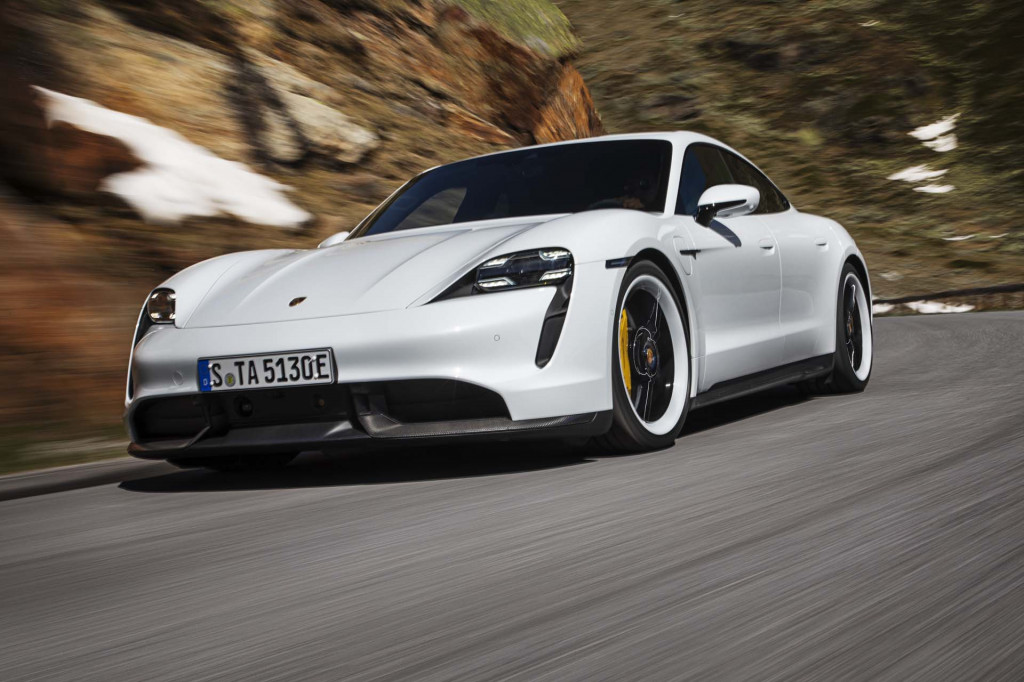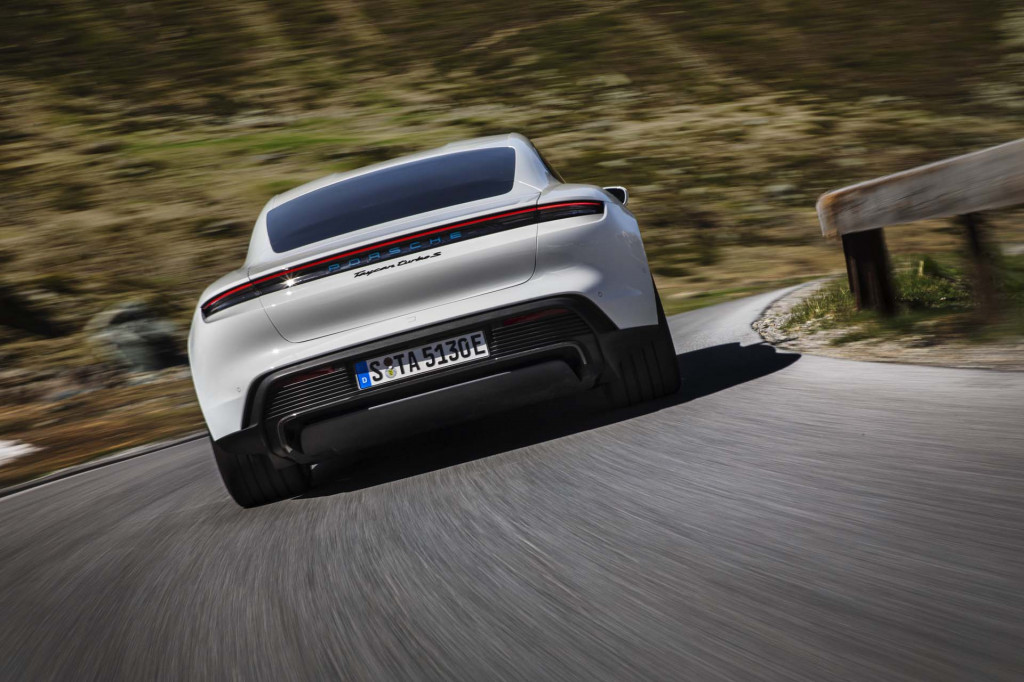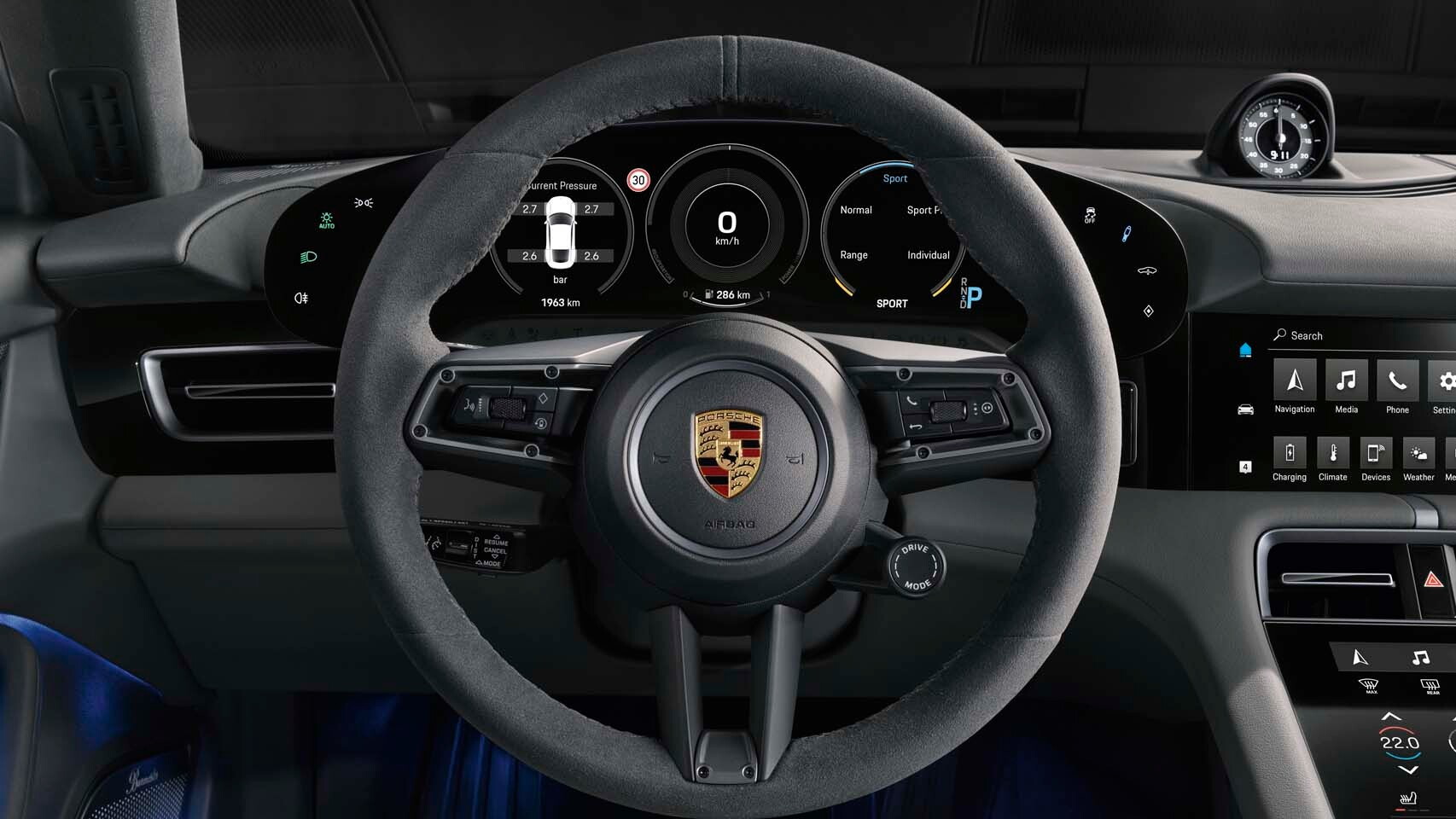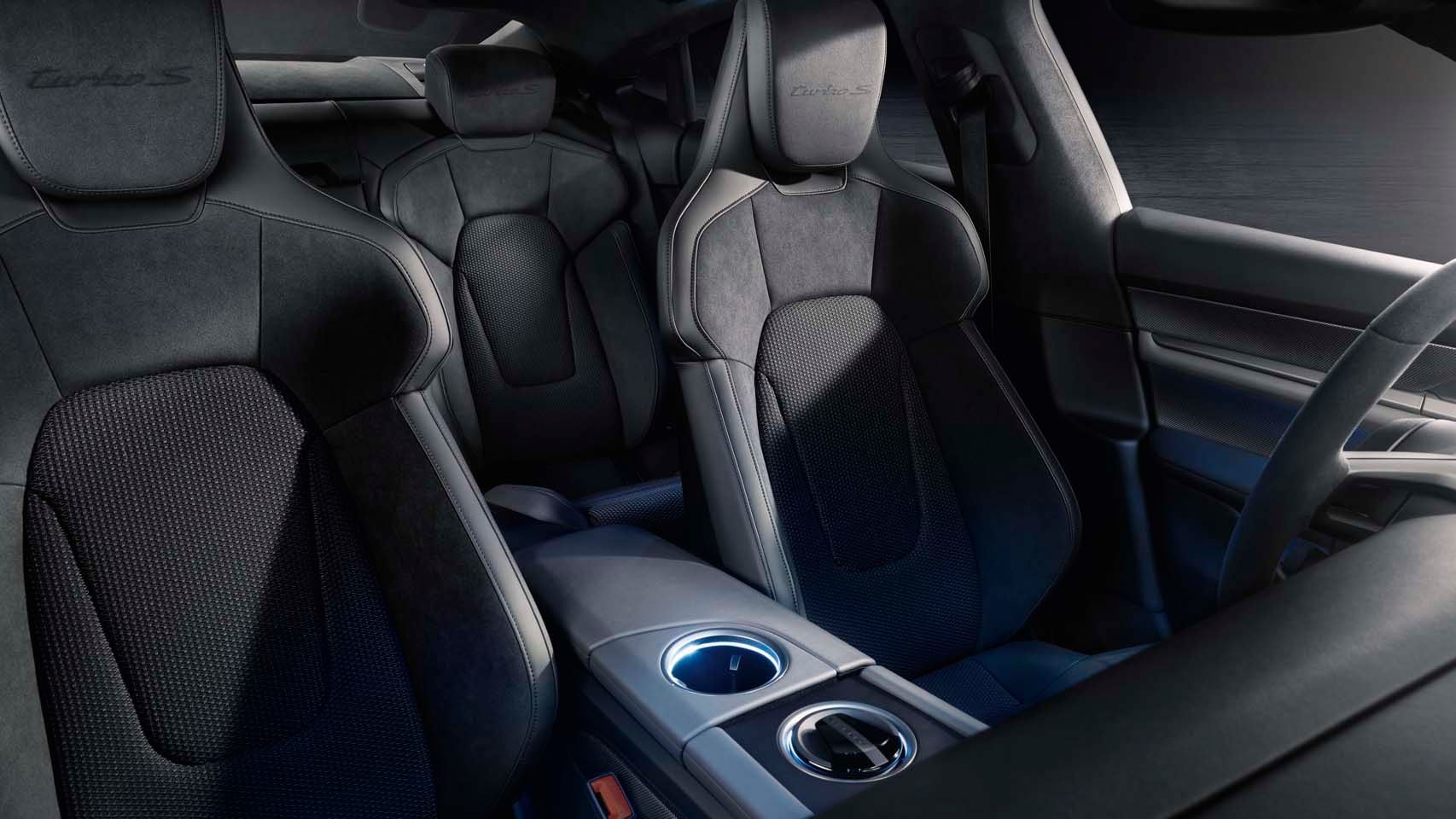The 2020 Porsche Taycan is the German maker’s sixth model line, its first-ever electric car, and remarkably expensive, starting at $152,250 for the Turbo and $186,350 for the Turbo S. Those are prices comparable to the similarly named models of the 911, its legendary sport coupe.
It rides on an entirely new platform, code-named J1, that will spawn both the Taycan Sport Turismo shooting-brake model and an Audi e-tron GT sedan. Those underpinnings carry over only a small number of existing Porsche components, including suspension pieces adapted from that of the Panamera large sedan.
The company spent a full day running down all aspects of the Taycan’s technology for members of the North American media at its Porsche Experience Center in Atlanta two weeks ago. A complete summary would require thousands of words. Here’s what you need to know.

2020 Porsche Taycan
2020 Porsche Taycan battery pack specs
Like all modern electric cars, the Porsche Taycan uses a thin battery pack under the floorpan that stretches the full width of the car almost from axle to axle. The four-door sedan on top of it is exceptionally low, so the engineers omitted cell modules under the rear-seat passengers’ legs to provide “foot garages” to give a more conventional riding position.
The Taycan Turbo and Turbo S models, the first variants to launch, both use a battery with 93 kilowatt-hours of capacity, slightly less than Tesla’s largest battery. It contains 33 modules of 12 LG Chem pouch cells apiece. The battery, motors, and power electronics are cooled by a pair of radiators at the front outboard corners of the car.
Porsche’s innovation has been to wire pairs of those cells in series, allowing the battery to discharge and charge at up to 800 volts—at the same current, enabling double the power versus the 400-volt packs used in all previous hybrids and electric cars. It’s derived in part from the company’s battery architecture for the 919 Hybrid endurance race car that won the 24 Hours of Le Mans three years running.
Larger battery capacities will likely appear in future versions of the Taycan as the energy density of cells improves.

2020 Porsche Taycan preview
Taycan motors and drive modes
The Taycan Turbo and Turbo S models use two electric motors, one for each axle. The rear motor powers the wheels through a two-speed gearbox that uses a low ratio for maximum acceleration, and a higher ratio for more efficient high-speed cruising.
While Porsche uses the same front motor on both versions, its output is higher in the Turbo S due to use of a more powerful converter than the one used in the Turbo model.
For full details on output, power, and torque, see our comparison of the 2020 Porsche Taycan Turbo vs. Turbo S.
The Taycan has three basic drive modes: Normal, Sport, and Range. The software for each varies the power delivery, rear-axle shift points, and use of regenerative braking to provide maximum performance (Sport) or greater distance capability (Range).

2020 Porsche Taycan preview
2020 Porsche Taycan charging and performance
Porsche’s first electric car has two charge ports: a conventional 240-volt Level 2 port in the left front fender, plus a combined DC fast charging and Level 2 port on the right-front fender. (The arrangement is reversed for right-hand-drive markets.)
While 90 percent of Taycan charging will be done at home or work, one factor that separates the Taycan from other high-end battery-electric vehicles is the speed of its fast charging. The 800-volt battery architecture allows charging at up to 270 kilowatts on launch. Future Taycan models with larger batteries could charge at rates up to 400 or 500 kw, Porsche said, while 400-volt vehicles are limited to roughly the 250-kw peak rate Tesla is now rolling out at its Supercharger sites.
The Electrify America charging network owned by VW Group now has several hundred charging sites across the U.S. Each will have at least one station capable of charging a Taycan at its maximum rate, giving it an 80-percent recharge in 20 minutes or less. Other networks, including EVgo and ChargePoint, are similarly upgrading some of their stations.
Porsche notes frequently in its presentations and spec sheets that the Taycan can deliver its highest level of performance repeatedly, with no slowing down as the battery heats up and its capacity wanes. That’s something its competitors—which presently means Tesla—can’t promise.
Porsche pegs the Taycan Turbo at 616 horsepower—which rises to 670 hp with launch control—and 626 pound-feet of torque. The Taycan Turbo S also starts at 616 horsepower, but rises to 750 hp with launch control, and caps twist at 774 lb-ft of torque. Curb weight is substantial: 5,121 pounds for the Turbo, 5,132 pounds in Turbo S trim.
In terms of sheer acceleration, the Turbo will accelerate from 0 to 60 mph in 3.0 seconds, and the Turbo S cuts that time to 2.6 seconds.

2020 Porsche Taycan
Suspension
The Taycan shares a few suspension pieces with Porsche's Panamera, but engineers had to adapt some of the front and rear suspension components because of the lower profile and added weight of the Taycan. The height of the front struts had to be reduced by a few centimeters. In the rear, a new subframe carries adapted Panamera control arms.
Rear-wheel steering adds 2.8 degrees of angle for tight turns at low speeds, and 0.1 to 0.2 degrees at high speeds to reduce wheel slip in turns.
An optional air suspension required a new three-chamber system with a separate pressure tank to fit under the low front end. Taycans with the air suspension lower themselves 10 millimeters at 90 km/h (56 mph) and another 12 mm at 180 km/h (112 mph). The driver can also raise the suspension 20 mm over rough surfaces.
The optional Porsche Dynamic Chassis Control (PDCC) system is adapted from that of the Panamera, but uses 48-volt actuation. It can reduce body roll under hard cornering to almost 0 degrees, as well as compensate for side-to-side body motion from surface irregularities.

2020 Porsche Taycan
Porsche Taycan design
Looked at for the first time, the Taycan could easily be the next-generation Panamera: a somewhat lower, sleeker, and wider sedan. Porsche notes it has the same width-to-height ratio as the iconic 911 sport coupe.
Absolutely nothing on the outside indicates that it’s powered by a battery rather than gasoline, save the two charge ports on the front fenders and the absence of rear exhaust pipes.
But Porsche has worked extensively on its aerodynamics, putting thousands of hours into reducing wind drag to maximize the range of the 93-kwh battery. Smooth underbody panels run virtually the entire length of the car, for instance. A subtle depression running down the center of the roof shaves a millimeter or two off the car’s frontal area, and vertical vents in the front fenders direct air past the front wheels to reduce turbulence.
The result is a drag coefficient claimed to be a very low 0.22, though we should note different makers’ drag figures shouldn’t be directly compared since there’s no standard way to measure that statistic.
Nonetheless, the 2020 Porsche Taycan is extremely aerodynamic for a four-passenger sedan. It’s also fast, despite its weight, which is roughly 700 pounds higher than a Panamera of the same trim level (Turbo or Turbo S).
Disclosure: Porsche paid for airfare, lodging, and meals to enable Internet Brands Automotive to bring you this first-person report.



















